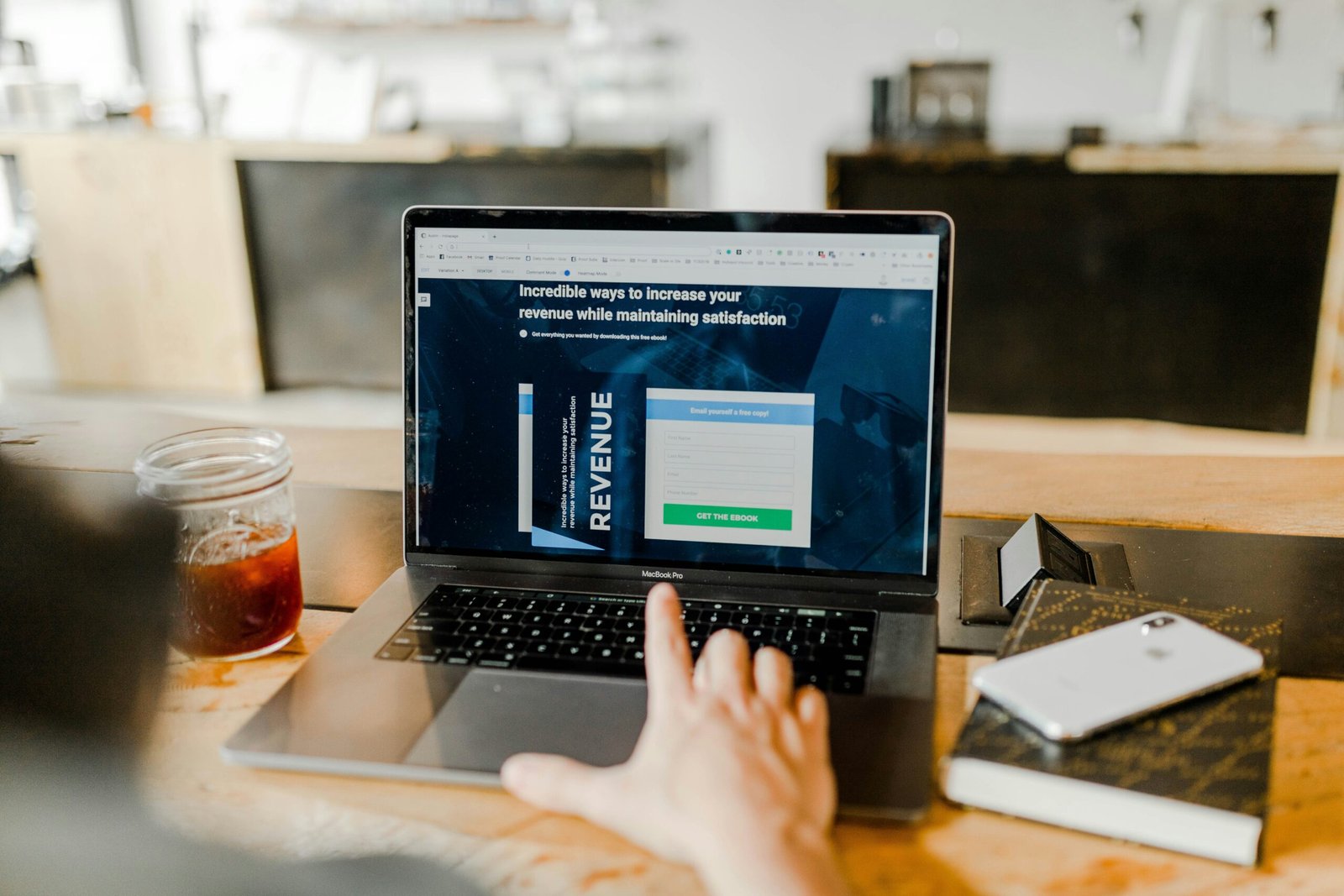Introduction to LinkedIn for Fintech
LinkedIn has emerged as a pivotal platform for businesses across various sectors, particularly for those within the fintech industry. Unlike traditional social media platforms, LinkedIn is tailored for professional networking, making it an ideal space for fintech companies looking to connect with other businesses, industry leaders, and potential clients. The varied functionalities LinkedIn provides—ranging from networking capabilities to content sharing—position it as a powerful tool for enhancing visibility and fostering relationships in the fintech community.
One of the unique characteristics of LinkedIn is its emphasis on B2B interactions. Fintech businesses can leverage this feature to engage with professionals who are specifically interested in financial technology solutions. By fostering connections and collaboration with other firms and industry stakeholders, fintech organizations can not only expand their reach but also establish themselves as credible players within the competitive landscape. This distinct focus on business-oriented interactions facilitates meaningful discussions and promotes thought leadership, which can significantly enhance the reputation of a fintech brand.
Moreover, LinkedIn serves as an excellent platform for community building. It allows fintech companies to create and participate in specialized groups, where professionals can share insights, discuss trends, and collaborate on projects. This aspect of LinkedIn contributes to the overall growth of the fintech ecosystem, as members gain access to valuable information and resources that can aid in their professional development. As businesses increasingly shift towards digital channels for growth, leveraging LinkedIn’s capabilities can be a crucial strategy for fintech organizations aiming to enhance their presence and influence in this dynamic sector.
Creating an Optimized LinkedIn Profile
In the digital age, a well-crafted LinkedIn profile is essential for professionals in the fintech sector looking to establish their brand and network effectively. The first impression on LinkedIn is often made through the profile photo, which should be professional and approachable. Choosing a high-quality image where you are dressed appropriately can help evoke trust and credibility among potential clients and partners.
The headline is another critical component of your profile. It’s advisable to include relevant keywords that resonate with the fintech industry, such as “Fintech Innovator,” “Blockchain Expert,” or “Financial Technology Specialist.” This strategic use of terminology not only captures attention but also enhances your profile’s likelihood of appearing in searches conducted by individuals looking for expertise in fintech-related areas.
Next, the summary section serves as a compelling narrative of your professional journey. It is essential to convey the unique aspects of your fintech business while integrating keywords that represent your competencies and particular areas of focus. This section should discuss your mission, vision, and the specific problems your fintech solutions address. Engaging storytelling can amplify reader interest and create an emotional connection with your audience.
When detailing your experience, be thorough and precise. Use bullet points to list your accomplishments, showcasing measurable achievements within the fintech space. Aligning your skills with the demands of the fintech industry fosters a strong impression and demonstrates your relevance in a rapidly evolving field. Additionally, don’t overlook the importance of a professional cover photo that aligns with your brand, setting the tone for your profile and enhancing its visual appeal.
By investing time and thought into each element of your LinkedIn profile, you will better position yourself for networking opportunities and growth within the fintech ecosystem.
Building a Strong Network
Establishing a robust network on LinkedIn is crucial for any fintech business aiming to expand its reach and influence. Identifying and connecting with key industry players, potential clients, and similarly minded professionals can propel your business forward. One effective strategy is to leverage your existing networks. Begin by exploring your current connections and identifying mutual contacts who can introduce you to valuable individuals in the fintech sector.
An essential aspect of building your LinkedIn network lies in the art of sending personalized connection requests. Rather than using generic messages, take the time to tailor your requests to the individual you wish to connect with. Mention a specific reason for wanting to connect, such as a shared interest in fintech innovations or initiatives they have been part of. This personal touch not only increases the likelihood of acceptance but also sets the stage for a meaningful professional relationship.
Moreover, engaging consistently with your connections plays a vital role in nurturing these relationships. Share relevant content, comment thoughtfully on their posts, and participate in discussions related to the fintech industry. This engagement demonstrates your commitment to the field and positions you as an active participant in the community.
Additionally, following companies, thought leaders, and industry groups can significantly enhance your visibility in the fintech sector. By staying updated with the latest trends and insights, you position yourself to join relevant conversations and connect with individuals who share your interests. This involvement not only allows you to grow your network organically, but also establishes your brand as a knowledgeable and influential entity within the fintech landscape.
Creating and Sharing Valuable Content
Developing a presence on LinkedIn as a fintech professional necessitates a strategic approach to content creation and sharing. Effective types of content can significantly enhance visibility, establish authority, and engage your specific audience in the financial technology domain. Articles stand out as one of the most effective formats, allowing professionals to delve deep into topics such as emerging technologies, regulatory changes, and market dynamics. A well-researched article not only conveys expertise but also positions the writer as a thought leader in the fintech landscape.
Shorter posts are another vital component of a robust LinkedIn strategy. These can be used to share quick insights, industry news, or trending topics within the fintech sector. Utilizing infographics can further aid in presenting complex data in an easily digestible manner, thereby appealing to both visual learners and busy professionals seeking quick updates. Video content, too, is gaining traction; short videos can elucidate complex fintech concepts or provide updates on company milestones, adding a personal touch to your communication.
In addition to original content pieces, sharing insightful commentary on current trends is critical. By discussing recent developments or analyzing the implications of legislation in the fintech industry, you can demonstrate your expertise and provoke discussion among your connections. Moreover, sharing original research and case studies can offer unique perspectives that resonate with fellow professionals, fostering engagement and dialogue within your network.
Ultimately, consistency and relevance in content sharing not only help in building visibility but also in nurturing relationships with peers and potential clients in the fintech space. A well-rounded content strategy positions you and your fintech business favorably in an ever-evolving landscape, creating opportunities for collaboration and growth.
Engaging with the LinkedIn Community
Engagement is a crucial element of building a robust LinkedIn presence, especially for professionals in the fintech industry. By actively participating in the LinkedIn community, individuals can foster connections, elevate their visibility, and enhance their authority in this competitive sector. One effective way to engage is by commenting on and sharing relevant content posted by others. This not only helps in staying updated with industry trends but also encourages reciprocal interaction from fellow professionals, leading to a richer network.
Joining relevant LinkedIn groups presents another opportunity to connect with like-minded individuals in the fintech space. These groups serve as platforms for discussions on industry-specific topics, allowing members to exchange insights and best practices. Participation in these groups enables individuals to demonstrate their expertise while also learning from other experts and peers. It is essential to contribute meaningfully to conversations by posing thoughtful questions, providing constructive feedback, and sharing personal experiences. This kind of engagement helps in establishing oneself as a knowledgeable resource within the fintech community.
Best practices for meaningful interactions on LinkedIn involve more than just promoting one’s own content. When commenting on posts, it is important to be genuine and to add value to the conversation. Sharing insights or asking questions can make discussions more dynamic and engaging. Additionally, consistency in participation is key; regularly interacting with others’ content helps maintain visibility. By consistently providing quality engagement, professionals can cultivate a supportive network, allowing them to stay connected with industry developments and trends.
In conclusion, engaging with the LinkedIn community through thoughtful interactions, participation in groups, and contributing to discussions can significantly enhance an individual’s presence within the fintech industry. This engagement not only fosters connectivity but also solidifies one’s authority and influence on the platform.
Utilizing LinkedIn Features and Tools
LinkedIn offers a range of features and tools designed to enhance visibility and engagement, essential for fintech businesses aiming to grow their online presence. One notable feature is LinkedIn Stories, which allows users to share short-lived content that disappears after 24 hours. This feature enables your fintech business to provide quick updates, sneak peeks of new services, or behind-the-scenes looks at your operations. Effectively using LinkedIn Stories can create a sense of urgency and exclusivity, prompting your audience to engage with your content actively.
Another impactful tool is LinkedIn Live. This feature facilitates real-time broadcasting to your connections and followers, enabling fintech companies to host webinars, Q&A sessions, or product launches. The immediacy of live streaming fosters interaction, allowing viewers to engage directly through comments or questions, thereby enhancing the user experience. To maximize the potential of LinkedIn Live, prepare engaging content and promote your live sessions ahead of time to ensure an interested audience. Real-time engagement through this platform can significantly elevate your business’s profile and establish authority in the fintech space.
Additionally, utilizing the LinkedIn Publishing Platform can further bolster your presence. By writing in-depth articles related to the fintech industry, your business can showcase expertise and provide valuable insights to your audience. Regularly publishing high-quality content not only positions your company as a thought leader but also encourages interactions and shares, which can lead to increased visibility. By integrating relevant keywords related to fintech, such as “financial technology innovations” or “digital banking solutions,” you can enhance searchability and attract a broader readership. By leveraging these LinkedIn features effectively, your fintech business can enhance not only its online authority but also foster a more engaging and interactive community.
Measuring Success and Adjusting Strategies
In the competitive landscape of fintech, establishing a robust presence on LinkedIn is essential, but understanding the effectiveness of your efforts is equally crucial. Tracking metrics allows businesses to gauge their performance and identify areas for improvement. Key metrics to monitor include engagement rates, profile views, connection growth, and content performance.
Engagement rates indicate how effectively your audience interacts with your content. High engagement typically translates to a higher relevance score within LinkedIn’s algorithm, resulting in increased visibility. Monitoring likes, comments, and shares on your posts can provide insights into the types of content that resonate with your audience. Additionally, examining the number of profile views can highlight the effectiveness of your personal brand and the attractiveness of your profile to potential connections and clients.
Connection growth is another critical metric. A steady increase in connections suggests that your outreach strategy is effective, while stagnation may signal a need to reassess your engagement or content approach. Similarly, analyzing content performance is essential for fine-tuning your messaging and determining which topics spark interest in your target audience. By identifying top-performing posts, you can create more tailored content that aligns with your audience’s preferences.
To facilitate this analysis, LinkedIn provides various analytic tools such as LinkedIn Analytics and the Campaign Manager for paid advertisements. These platforms offer insights into your audience demographics, engagement patterns, and content reach. By leveraging these analytic tools, your fintech business can make data-driven decisions, refining your strategies based on evidence rather than assumptions.
Ultimately, measuring success through analytics enables continual refinement of your LinkedIn presence, ensuring that your efforts align with your business goals and target audience preferences. This iterative approach can lead to sustained growth, positioning your fintech business for long-term success on the platform.
Collaborating with Influencers and Thought Leaders
In the competitive landscape of fintech, collaborating with influencers and industry thought leaders can significantly enhance your brand’s visibility and credibility. These partnerships not only allow you to reach a broader audience but also lend authority to your messaging by associating with recognized figures in the field. When executed thoughtfully, collaborations can lead to increased engagement, content co-creation, and greater insight into industry trends.
Identifying the right influencers to collaborate with is a crucial first step. Start by researching individuals who have a substantial following within the fintech domain and whose values align with your brand. Social media platforms, such as LinkedIn, can be a useful tool to discover industry leaders who share topical insights and are active in discussions relevant to your business. Pay attention to their engagement metrics; influencers with a highly engaged audience may be more effective partners than those with a larger but less interactive following.
Once potential collaborators are identified, approach them with a clear value proposition. This could be providing them with exclusive insights, data, or the opportunity for joint content creation that benefits both parties. Crafting a personalized message that highlights mutual goals can create a stronger foundation for collaboration. Mutual benefits should be at the forefront, as the motivation for both parties to engage will make for a more fruitful partnership.
Creating co-branded content is an effective strategy to maximize the success of your influencer partnerships. This may include webinars, podcasts, blog posts, or even joint social media campaigns. Such collaborations enrich your content offering while amplifying reach through both networks. With thoughtful planning and execution, collaborating with influencers can become a powerful tool for growing your fintech business, ultimately leading to increased visibility and robust engagement within your target audience.
Conclusion and Next Steps
In conclusion, establishing a strong LinkedIn presence is a critical factor in promoting the growth of your fintech business. The key elements discussed in this blog post emphasize the importance of a well-crafted profile, targeted connections, and active engagement. By optimizing your LinkedIn profile with a professional photo, compelling headline, and a thorough summary, you can create a powerful first impression that captures the attention of potential clients and partners.
Furthermore, intentional networking through relevant connections can help broaden your reach. Connecting with industry leaders, potential clients, and like-minded professionals enhances your visibility within the fintech sector. Regularly publishing insightful content not only positions you as a thought leader but also facilitates deeper engagement with your audience. Sharing articles, infographics, and personal insights can substantially enrich your online presence.
Consistency is paramount in maintaining an effective LinkedIn presence. As your fintech business evolves, revisiting and adjusting your content strategy is essential to staying relevant within the industry. Regularly assessing the performance of your posts will furnish you with insights that can guide your future interactions. Responding to comments and messages promptly also reinforces your commitment to your audience and helps nurture valuable relationships.
Lastly, as you navigate the ever-changing landscape of the fintech industry, remain adaptable. Embrace feedback and be open to refining your approach based on emerging trends and audience preferences. By following these actionable steps, you can continually enhance your LinkedIn presence, ultimately driving growth for your fintech business. Start implementing these strategies today and watch as your professional network expands, fostering new opportunities for collaboration and business development.




